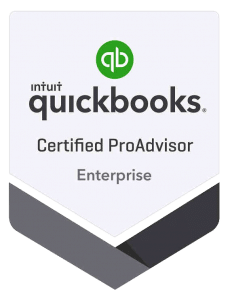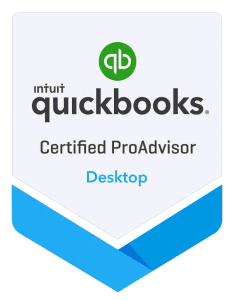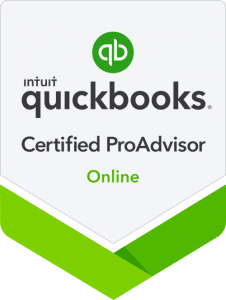Running payroll seems simple on the surface. You make sure everyone gets paid on time. But as any small business owner knows, it gets complicated fast. From chasing down timecards to fixing paycheck mistakes and tracking tax deadlines, one error can throw off your entire week.
That’s where full-service payroll comes in. It lets someone else handle the tasks that weigh you down. Instead of double-checking numbers or researching tax forms, you focus on managing your business while a trusted provider takes the payroll load off your plate. Here’s what full-service payroll covers and why it might be the right move for your business.
What Is Full-Service Payroll?
Full-service payroll means outsourcing all of your payroll tasks to a payroll provider. It’s not just issuing paychecks. It’s the full package that keeps your payroll system running accurately and legally with minimal effort from your side.
What most full-service payroll options include:
– Collecting and verifying employee hours, tips, or salaries
– Calculating gross pay, withholdings, and net pay
– Accurate tax withholdings for federal, state, Social Security, and Medicare
– Submitting payroll taxes to the correct agencies on time
– Filing quarterly and year-end tax documents
– Issuing direct deposit payments or physical checks
– Providing W-2 or 1099 forms to staff at year-end
Some providers also offer services like PTO management, garnishments, benefits deductions, new hire reporting, and unemployment insurance reporting. The level of support depends on the provider you choose, but the goal stays the same: free up your time and cut down on payroll stress.
Think of full-service payroll like putting your car in the hands of a good mechanic. They don’t just fix the squeaky brakes, they handle oil changes, tire pressure, and inspections before problems begin. It’s preventive and proactive.
Benefits of Full-Service Payroll for Small Businesses
Payroll takes time, even when things go smoothly. Add in distractions, staff turnover, correcting errors, or changing tax rules, and it quickly becomes overwhelming. Here’s how handing it over can help your business.
1. Saves Time
Managing payroll often takes hours each pay period. Between double-checking pay periods, recalculating taxes, or fixing data entry errors, it’s easy to lose entire afternoons. A payroll provider takes care of these tasks so you can spend those hours elsewhere.
2. Reduces Mistakes
Manual entries and oversight can lead to missed hours, incorrect tax rates, or underpaid wages. Your payroll provider uses automated systems and specialist knowledge to pick up those issues before they become real problems.
3. Boosts Compliance
Tax laws don’t stay the same for long. Most providers make it their job to stay current. That means fewer chances of facing fines or penalties for missed filings.
4. Brings Peace of Mind
When you know your payroll is accurate and timely, you don’t waste time second-guessing or firefighting. That mental space can make a big difference in how you approach the rest of your business.
5. Supports Your Team
Got an employee who lost a pay stub or has a question about their withholding? A good payroll provider makes it easy for staff to find help or get answers quickly.
You’re not losing control when you outsource. You still oversee the core details, but you gain a structured, more reliable way to manage an area of the business that leaves little room for error.
Choosing the Right Full-Service Payroll Provider
Picking a payroll partner is an important decision, and there’s no one-size-fits-all answer. Here are some things to look for when comparing options.
1. Reputation
Read recent testimonials and reviews. Are people happy with the service? Were problems handled professionally and quickly?
2. Support
Can you contact someone directly if there’s an issue? The best providers have real people to talk to, not just chatbots or email-only systems.
3. Software Integration
Your payroll system should work well with whatever accounting, time-tracking, or HR tools you’re already using. Less duplicated effort, fewer errors, and more streamlined reporting.
4. Security
Payroll data is sensitive information. Ask how providers protect employee records, bank data, and tax information.
5. Transparency
Ask questions. What happens if there’s a missed filing? How long does it take to fix mistakes? Good providers won’t have vague answers.
Choosing right doesn’t mean finding the biggest name. It means finding a team that fits your needs and feels easy to work with.
How to Get Started with Full-Service Payroll
Switching over doesn’t have to be difficult. The setup process is straightforward with a bit of planning.
Start by gathering your current payroll records. This includes employee names, contact info, pay rates, tax identification numbers, and any current deductions, benefits, or withholdings.
Next, schedule a setup call with your chosen provider. They’ll walk you through transferring this data into their system.
Helpful setup tips:
– Run a mock payroll cycle early to catch any errors in the system
– Let employees know what to expect, including how their pay stubs may look or how changes will be communicated
– Set time aside to go over the new system so you understand where things stand
Switching from in-house to outsourced payroll might feel like a big step, but once it’s done, you’ll likely wonder how you managed without it.
Ensuring Ongoing Success with Full-Service Payroll
Getting started is just the beginning. To keep your payroll running smoothly, plan for regular updates and communication with your provider.
– Schedule check-ins to review reports or verify adjustments
– Let your provider know if you hire new staff, adjust wages, or start offering benefits
– Stay informed about payroll law changes so nothing catches you by surprise
Even if the provider handles most filings automatically, you still need to know when things change so you can respond quickly.
Good communication leads to trust, and trust makes for smoother payroll cycles.
Making the Switch Easier
If you’ve been doing payroll on your own, the idea of switching may feel overwhelming. But a few smart moves can make the process easier on everyone.
– Document your current payroll steps in case there are hiccups during the switch
– Choose a transition date when things are slower, such as right after filing your quarterly taxes
– Train your internal staff on where to direct questions or how to access the new system
– Double-check things like holiday calendars, time off settings, and employee classifications
These small details help prevent future confusion and show your team the process will now be easier and more reliable.
Say Goodbye to Payroll Headaches
Payroll isn’t just about numbers. It’s about keeping your team happy, staying within legal boundaries, and knowing things are handled consistently. Full-service payroll pulls that pressure off your shoulders.
By outsourcing payroll, you can shift your attention back to growing your business and spending time doing what matters most. Whether it’s managing your team, meeting with clients, or improving operations, you’ll have more space to show up as the leader your business needs. Switching to full-service isn’t giving up control. It’s choosing smart, dependable support for one of your most important responsibilities.
FAQs
1. What is the difference between full-service payroll and in-house payroll?
Full-service payroll is handled by an outside provider who takes care of everything. In-house payroll means you or someone on your team handles it manually. Full-service is quicker, safer, and usually more accurate.
2. How much does full-service payroll cost on average?
Cost depends on how many employees you have and which services you need. It’s best to get a quote based on your specific situation.
3. Can full-service payroll handle compliance with all state and federal laws?
Yes. Most providers keep up with federal and state rules so you stay in compliance without having to do the research yourself.
4. How often should I review my payroll services?
Once a year is a good rule of thumb, or anytime something significant changes, like new hires or benefits.
5. What should I do if I encounter an issue with my payroll provider?
Reach out to their support team right away. A good provider will respond quickly and help troubleshoot the issue. You should feel confident bringing up concerns.
Looking to streamline your payroll process and free up more of your valuable time? Cloud Bookkeeping offers full-service payroll support designed to simplify operations and ensure everything runs smoothly, so you can spend less time on paperwork and more time growing your business.






